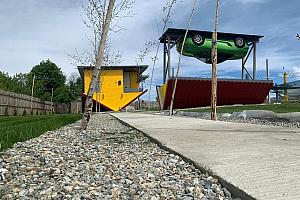Romanian constructors slow down on all sectors but residential

Constructors’ activity in Romania has lost stem to -5.8% YoY in August, after peaking in April (+14.1% YoY), dragged down by the civil engineering (infrastructure) and non-residential buildings segments, according to the statistics office INS.
The activity in the residential segment maintained robust growth (+29.3% YoY) in August, reaching a level that was 53% above that seen in August 2019.
In the non-residential segment, the activity contracted by 17.4% YoY remaining 5.2% above the level seen in August 2019. The civil engineering segment marked the weakest performance: it dropped by 13.4% YoY and 10.8% versus August 2019.
The residential segment remains buoyant, driven by low deposit interest rates (hence households seek alternative risk-free placement alternatives), moderate loan interest rates (making mortgage loans more affordable) and developers seeing this segment as a safe haven.
Looking forward, the infrastructure projects scheduled under the Recovery and Resilience Facility (RRF) are supposed to drain significant labour and capital resources, complicating the tight labour market and putting under stress the capacity of the local construction firms.
iulian@romania-insider.com
(Photo source: Dreamstime.com)













